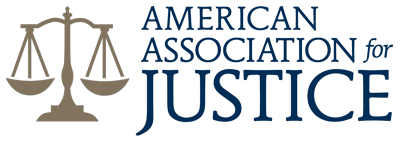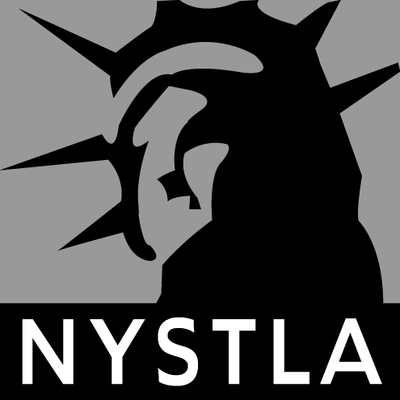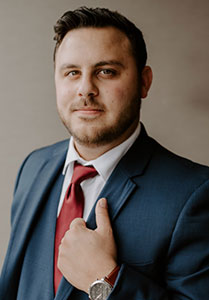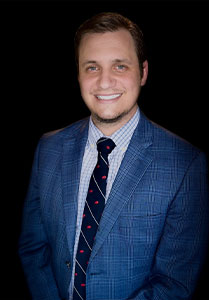Accidents involving motorcycles can be overwhelming and cause a lot of confusion for everyone involved. In New York, understanding how to show who is at fault in a motorcycle accident is very important for seeking justice and compensation. Fault means identifying the person or entity responsible for the crash. This process involves collecting information, following legal rules, and presenting proof to show what happened. Motorcycle accidents can result in serious injuries, which makes proving fault an essential step in recovering damages. At, Andrews, Bernstein & Maranto, PLLC , we are here to guide you through the legal process and help you navigate the complexities of your case.
Understanding Fault in New York Motorcycle Accidents
New York follows a rule known as comparative negligence, which means that fault can be shared between the parties involved in an accident. Even if someone is partially responsible for the crash, they may still be able to recover some compensation. To determine fault, insurance companies and courts often review evidence like traffic laws, police reports, witness statements, and any available video footage. Fault is not simply based on opinions but is carefully examined through facts and evidence.
The driver or rider who caused the accident might have done something negligent, such as speeding, ignoring traffic signals, or failing to yield the right of way. On the other hand, environmental factors like poor road conditions or defective motorcycle parts can also play a role. Understanding all the details of how the accident happened is the first step toward proving who is at fault.
The Role of Evidence in Proving Fault
Evidence is the foundation of any case involving a motorcycle accident. Gathering clear and accurate information about the accident is essential to showing what occurred. Pictures taken at the scene can reveal skid marks, vehicle damage, or other details that point to what happened. Police reports often include an officer’s description of the accident, and these reports can hold a lot of weight in determining fault.
Statements from witnesses can also be helpful. People who saw the accident may provide details that confirm how it unfolded. In some cases, traffic cameras or surveillance footage can offer a clear view of the events leading to the accident. Every piece of evidence helps build a stronger case. Keeping track of these materials and ensuring they are organized is crucial when proving fault in a motorcycle accident.
The Importance of Following Traffic Laws
Traffic laws play a key role in determining fault in motorcycle accidents in New York. These laws are designed to keep everyone safe on the road. If a driver or rider breaks a traffic rule and causes an accident, they may be found at fault. For example, running a red light, speeding, or failing to signal when turning are all actions that can lead to accidents.
Showing that another driver broke a traffic law can make it easier to prove fault. In some cases, the police report will note whether any traffic violations occurred. If a ticket was issued to the other driver at the scene, this can be an important part of the evidence. Following traffic laws yourself also strengthens your case because it shows that you were acting responsibly at the time of the accident.
How Negligence Plays a Role in Fault
Negligence occurs when someone fails to act in a way that a reasonable person would under similar circumstances. In motorcycle accidents, negligence often involves actions like distracted driving, reckless behavior, or not paying attention to the road. Proving negligence involves showing that the other party owed a duty of care, that they failed to meet this duty, and that their failure caused the accident.
For example, if a car driver was texting while driving and collided with a motorcycle, this could be seen as negligence. Evidence such as phone records or witness statements might confirm that the driver was not paying attention. Connecting the negligent action to the accident is a key part of proving fault.
The team is very personable, patient and empathetic with their clients. They are upfront with you and will explain the entire process with you, they never lead you to believe otherwise, they tell you like it is and will not sell you a million dollar dream. Trust in Andrews, Bernstein & Maranto, PLLC, they work for you and he looks out for your best interest.” - Jane D.
The Role of Comparative Negligence in New York
Comparative negligence allows fault to be divided among the parties involved in an accident. If both the motorcycle rider and the other driver were partially responsible, the compensation awarded may be reduced based on the rider’s share of fault. For example, if a rider was found to be 20 percent at fault and the damages totaled $100,000, they would only receive $80,000.
Understanding how comparative negligence works is important when building a case. The other side may try to argue that the motorcycle rider was partially responsible, even if this is not true. Strong evidence and legal support are necessary to counter such claims and ensure that fault is fairly assigned.
The Role of Insurance Companies in Determining Fault
After a motorcycle accident, insurance companies often play a big role in determining fault. They will review the evidence, including police reports, photos, and witness statements, to decide who they believe is responsible. It is important to remember that insurance companies are businesses, and their goal is often to pay as little as possible. This means they may try to argue that the motorcycle rider was at fault, even if the evidence suggests otherwise.
Working with legal professionals can help ensure that insurance companies do not unfairly assign fault. It is also important to communicate carefully with the insurance company and provide accurate information. Keeping a record of all interactions can help avoid misunderstandings.
Should I Take The First Settlement Offer? Steps to File a Personal Injury ClaimRelated Videos
How Legal Assistance Helps Prove Fault
Proving fault in a motorcycle accident can be a complex process, especially when multiple factors are involved. Legal professionals can provide guidance and help gather the necessary evidence to build a strong case. They understand the laws and regulations that apply to motorcycle accidents in New York and can use this knowledge to show who was at fault.
Having legal assistance also means having someone who can negotiate with insurance companies on your behalf. This can be especially helpful if the other side tries to shift blame or minimize the compensation you deserve. With the right support, you can focus on recovering while your legal team handles the details of your case.
Why Time Matters in Proving Fault
Time is an important factor when proving fault in a motorcycle accident. Evidence can become harder to collect as time passes. Witnesses may forget details, and physical evidence like skid marks can disappear. In New York, there is also a legal time limit, known as the statute of limitations, for filing a personal injury claim. Acting quickly ensures that your case is not affected by these time constraints.
Reaching out for help soon after the accident can make a big difference in the outcome of your case. The sooner the process begins, the easier it is to gather the evidence needed to prove fault and build a strong claim.
Verdicts & Settlements
Seeking Justice After a Motorcycle Accident
Proving fault in a motorcycle accident is an important step toward seeking justice and receiving compensation for injuries and damages. It requires careful attention to detail, a clear understanding of the law, and strong evidence. Every motorcycle accident is unique, and proving fault means looking at all the factors that contributed to the crash.
If you or a loved one has been involved in a motorcycle accident in New York, Andrews, Bernstein & Maranto, PLLC is here to help. Our experienced team is committed to guiding you through the process of proving fault and seeking the compensation you deserve. Contact us today for a consultation and take the first step toward protecting your rights.












